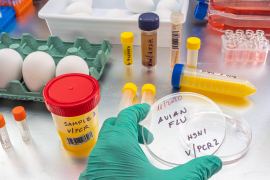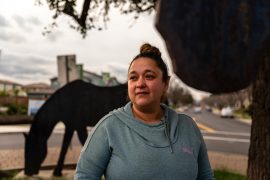Number of HIV-Positive California Residents Increases Because of Improved Treatment, Longer Survival
The number of HIV-positive California residents has increased 40% over the past seven years because of improvements in medications to treat the disease, according to a study released Wednesday by the University of California's Universitywide AIDS Research Program, the San Francisco Chronicle reports. "The consequence of improved survival among persons with AIDS is a rapid and sustained increase in the number of persons living with AIDS," UARP Director George Lemp said. About 151,000 HIV-positive residents live in the state, compared with 108,000 in 1998, according to the report. An estimated 57,200 of those individuals have been diagnosed with AIDS, twice the number of reported AIDS cases in the state 10 years ago. Because more people are living longer with the disease, the total annual cost of treatment also is increasing, according to the report. Spending through California's AIDS Drug Assistance Program, which uses federal and state funding to provide HIV/AIDS-related medications to low-income, uninsured and underinsured HIV-positive individuals, increased from $145 million in 2001 to $275 million this year, the report says. However, spending on HIV/AIDS prevention programs through the state Office of AIDS has declined, falling from $429 per HIV-positive person in fiscal year 2000-2001 to $351 in FY 2005-2006.
Signs Point To Potential Increase in Number of Cases
Although the increase in the state's number of HIV-positive residents likely is because of improved treatment, precise data on new infections in the state are difficult to obtain, and there are "worrisome signs that an increase in infections is likely," the Chronicle reports. "We look at 39 different indicators, and most of them -- two-thirds -- are going in the wrong direction," Lemp said. For example, the number of clients in the statewide HIV Counseling and Testing Program who reported having sex with more than five partners in the previous two years increased from 10% in 1995 to 24% in 2003, and the percentage of gay men diagnosed with AIDS in the Los Angeles area who reported not using condoms increased from 11% in 2000 to 26% in 2003. In addition, several surveys conducted in San Francisco showed that rates of unprotected anal sex increased from 42% in 1997 to 67% in 2003 (Russell, San Francisco Chronicle, 12/1). Lemp said, "We're very concerned about the significant increases in higher risk sexual behaviors and also some of the increases that we're seeing in drug-using behaviors that can lead to HIV infection," adding, "I think we really have a challenge to try to turn around these indicators" (Locke, AP/Monterey County Herald, 12/1).






